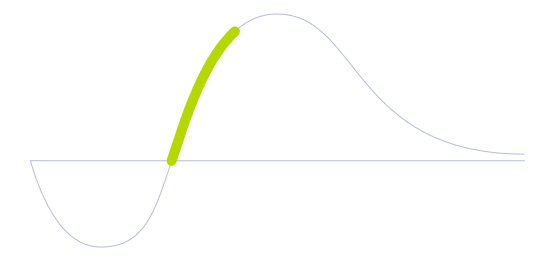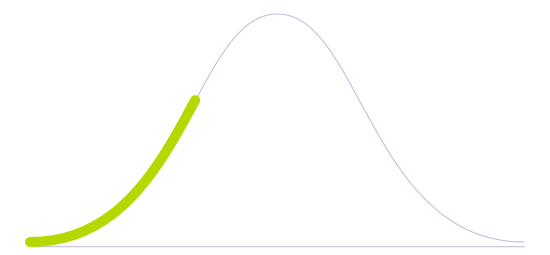Auxetic Material

Technology Life Cycle
Marked by a rapid increase in technology adoption and market expansion. Innovations are refined, production costs decrease, and the technology gains widespread acceptance and use.

Technology Readiness Level (TRL)
Validation is conducted in relevant environments, where simulations are carried out as close to realistic circumstances.

Technology Diffusion
Embrace new technologies soon after Innovators. They often have significant influence within their social circles and help validate the practicality of innovations.

These metamaterials exhibit a negative Poisson's ratio, implying they expand rather than contract in cross-section when stretched along their length. Conventional materials, such as rubber bands or steel, have a positive Poisson's ratio, meaning they contract in cross-section when stretched along their length.
They are programmable by nature, which opens up several possibilities for design and manufacturing. The unique behavior of auxetic materials arises from their complex internal structure. These materials typically have a cellular or lattice-like structure that allows them to deform in a way that leads to expansion in cross-section when stretched.
One of the main advantages of auxetic materials is their ability to absorb and dissipate energy. This makes them useful for applications such as protective clothing and impact-resistant and shock-absorbing materials. Auxetic materials have also been used in medical implants and prosthetics, where their ability to conform to complex shapes and resist deformation can be beneficial. Another benefit of auxetic materials is their potential for use in smart materials and sensors. Their unique deformation behavior can be used to detect and respond to changes in their environment, such as changes in temperature, pressure, or humidity.
There are several methods for fabricating auxetic materials and foams. One is to manipulate molecular compositions in lab environments, but the most promising approach is 3D printing, as it enables precise control over material substructures. When used to print auxetic materials, 3D printing converts itself into 4D printing.
4D printing auxetic monofilaments could be filled with healing or cosmetic agents and applied in smart bandage structures. As the skin expands - due to a wound or change in temperature - the monofilaments could expand by opening the chemical structure and releasing the agent. As the environment goes back to normal —the wound heals, or temperature decreases— the pores close once again, halting any unnecessary release of the agent.
Future Perspectives
The shape-shifting properties of auxetic materials might create a future in which objects interact better with our dynamics. Wearables, in constant contact with the human body, could have a greater impact due to their improved responsiveness. Besides continually tracking and analyzing the human body, they could change their own shape to better adapt to the environment and the agent-specific changes.
Researchers are looking into applications for auxetic materials in water management as well. The materials would enable water supply and drainage pipes to shrink or swell in line to help move water through the system. Alternatively, they could allow pipes to flex with ground movements from earthquakes. In the aerospace industry, the use of auxetic materials as insulating foams could reduce vibration and thermal distortion while also being efficient on impact-absorbent structures.
Besides, their ability to be 4D-printed could foster an even more revolutionizing movement in the industrial world. Once those printers become cheaper and more readily available for the mainstream, a wide range of open-source projects and personalized materials could be created. Furthermore, someone could buy a 3D printable design that would be fastly printed already in place by nano drones. Thanks to its auxetic properties, each object could adapt to user-specific needs. A chair or a couch could shape itself in an ergometric manner, XR headsets could fit perfectly to the user's body shape or even a prosthetic limb would be able to adapt and grow with the user accordingly.
Image: Midjourney